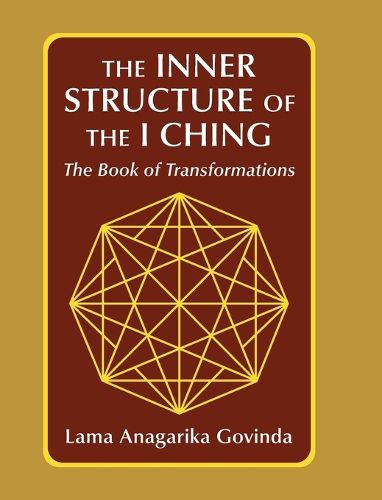Readings Newsletter
Become a Readings Member to make your shopping experience even easier.
Sign in or sign up for free!
You’re not far away from qualifying for FREE standard shipping within Australia
You’ve qualified for FREE standard shipping within Australia
The cart is loading…






This title is printed to order. This book may have been self-published. If so, we cannot guarantee the quality of the content. In the main most books will have gone through the editing process however some may not. We therefore suggest that you be aware of this before ordering this book. If in doubt check either the author or publisher’s details as we are unable to accept any returns unless they are faulty. Please contact us if you have any questions.
Decoding the I Ching: Lama Govinda's Timeless InsightsA must-read for anyone interested in learning about the I Ching, The Inner Structure of the I Ching is unique in its exploration of this ancient work. Influential interpreter of Tibetan mysticism Lama Anagarika Govinda shares insights that evolved over decades from his travels, observations, and personal practice as he sought to understand this timeless and ancient Chinese text.
Govinda believed that the trigrams and hexagrams of the I Ching provide wisdom that is essential in cultivating compassion, self-mastery, and a life in harmony with nature and in service to others. He introduces original concepts of the eight symbols of transformation and the correspondence of the five elements of wood, fire, earth, iron, and water with the Chinese zodiac. He goes on to explain the Eight Houses of Hexagrams in both the traditional order of King Wen and the abstract "movement in curves," all thoroughly illustrated with over 150 color diagrams.
He also discusses in depth the philosophical underpinnings of the text, exploring its roots in Taoist and Confucian thought. John Blofeld's introductory discourse firmly places the philosophical underpinnings of the I Ching in the context of Taoist principles and Tibetan Buddhism-a relationship the author further elaborates in his concluding remarks.
The I Ching is both fascinating and puzzling, especially to the uninitiated, but regardless of your familiarity with this prized text, you are in good hands with Lama Govinda: he has introduced generations to Tibetan Buddhism, Buddhist meditation, and Taoism through his books and commentary. This guide is a foundational resource for scholars, students, and practitioners of Eastern philosophy.
This book is also available from Echo Point Books as a paperback (ISBN 1648374050).
$9.00 standard shipping within Australia
FREE standard shipping within Australia for orders over $100.00
Express & International shipping calculated at checkout
This title is printed to order. This book may have been self-published. If so, we cannot guarantee the quality of the content. In the main most books will have gone through the editing process however some may not. We therefore suggest that you be aware of this before ordering this book. If in doubt check either the author or publisher’s details as we are unable to accept any returns unless they are faulty. Please contact us if you have any questions.
Decoding the I Ching: Lama Govinda's Timeless InsightsA must-read for anyone interested in learning about the I Ching, The Inner Structure of the I Ching is unique in its exploration of this ancient work. Influential interpreter of Tibetan mysticism Lama Anagarika Govinda shares insights that evolved over decades from his travels, observations, and personal practice as he sought to understand this timeless and ancient Chinese text.
Govinda believed that the trigrams and hexagrams of the I Ching provide wisdom that is essential in cultivating compassion, self-mastery, and a life in harmony with nature and in service to others. He introduces original concepts of the eight symbols of transformation and the correspondence of the five elements of wood, fire, earth, iron, and water with the Chinese zodiac. He goes on to explain the Eight Houses of Hexagrams in both the traditional order of King Wen and the abstract "movement in curves," all thoroughly illustrated with over 150 color diagrams.
He also discusses in depth the philosophical underpinnings of the text, exploring its roots in Taoist and Confucian thought. John Blofeld's introductory discourse firmly places the philosophical underpinnings of the I Ching in the context of Taoist principles and Tibetan Buddhism-a relationship the author further elaborates in his concluding remarks.
The I Ching is both fascinating and puzzling, especially to the uninitiated, but regardless of your familiarity with this prized text, you are in good hands with Lama Govinda: he has introduced generations to Tibetan Buddhism, Buddhist meditation, and Taoism through his books and commentary. This guide is a foundational resource for scholars, students, and practitioners of Eastern philosophy.
This book is also available from Echo Point Books as a paperback (ISBN 1648374050).